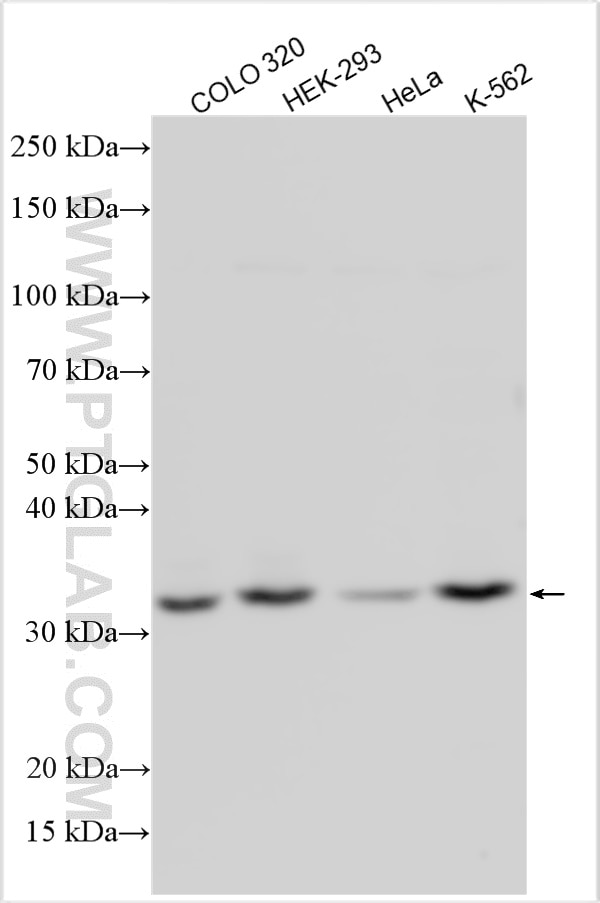Anticorps Polyclonal de lapin anti-SMUG1
SMUG1 Polyclonal Antibody for WB, ELISA
Hôte / Isotype
Lapin / IgG
Réactivité testée
Humain
Applications
WB, ELISA
Conjugaison
Non conjugué
N° de cat : 19857-1-AP
Synonymes
Galerie de données de validation
Applications testées
| Résultats positifs en WB | cellules COLO 320, cellules HEK-293, cellules HeLa, cellules K-562 |
Dilution recommandée
| Application | Dilution |
|---|---|
| Western Blot (WB) | WB : 1:500-1:1000 |
| It is recommended that this reagent should be titrated in each testing system to obtain optimal results. | |
| Sample-dependent, check data in validation data gallery | |
Informations sur le produit
19857-1-AP cible SMUG1 dans les applications de WB, ELISA et montre une réactivité avec des échantillons Humain
| Réactivité | Humain |
| Hôte / Isotype | Lapin / IgG |
| Clonalité | Polyclonal |
| Type | Anticorps |
| Immunogène | SMUG1 Protéine recombinante Ag13934 |
| Nom complet | single-strand-selective monofunctional uracil-DNA glycosylase 1 |
| Masse moléculaire calculée | 177 aa, 20 kDa |
| Poids moléculaire observé | 34 kDa |
| Numéro d’acquisition GenBank | BC000417 |
| Symbole du gène | SMUG1 |
| Identification du gène (NCBI) | 23583 |
| Conjugaison | Non conjugué |
| Forme | Liquide |
| Méthode de purification | Purification par affinité contre l'antigène |
| Tampon de stockage | PBS with 0.02% sodium azide and 50% glycerol |
| Conditions de stockage | Stocker à -20°C. Stable pendant un an après l'expédition. L'aliquotage n'est pas nécessaire pour le stockage à -20oC Les 20ul contiennent 0,1% de BSA. |
Informations générales
UNG(Uracil-DNA glycosylase) removes uracil in DNA resulting from deamination of cytosine or replicative incorporation of dUMP instead of dTMP. Thus, UNG plays a role in suppressing GC-to-AT transition mutations.The UNG gene encodes 2 isoforms that are individually targeted to the mitochondria and the nucleus(PMID:12369930).Defects in UNG are a cause of immunodeficiency with hyper-IgM type 5 (HIGM5). This antibody is specific to UNG.
Protocole
| Product Specific Protocols | |
|---|---|
| WB protocol for SMUG1 antibody 19857-1-AP | Download protocol |
| Standard Protocols | |
|---|---|
| Click here to view our Standard Protocols |


